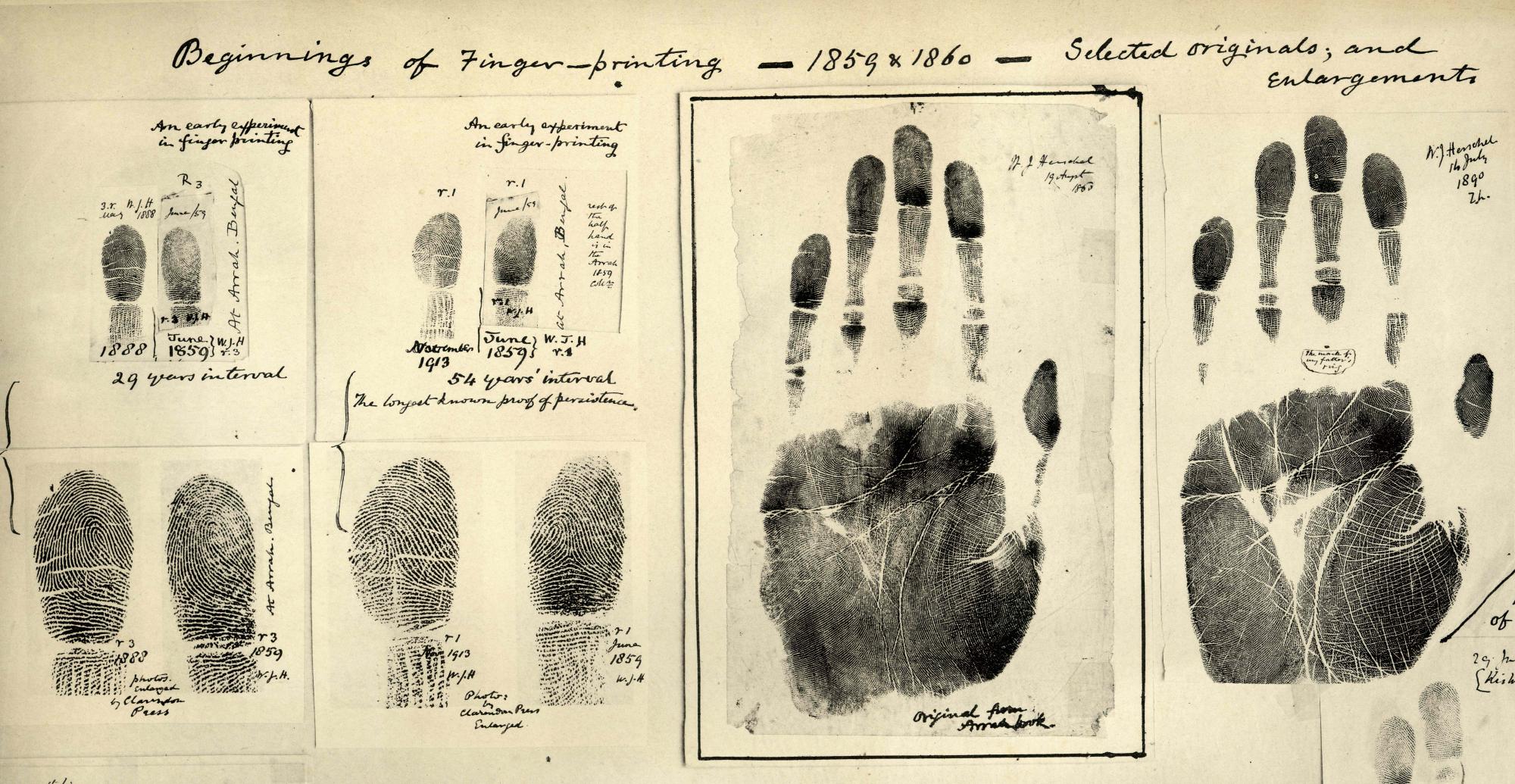Scientists Can Now Establish Your Gender From a Fingerprint
Jamie Condliffe | November 27, 2015
A team of researchers from the University at Albany has developed a technique which uses the chemical composition of a fingerprint to ascertain gender. It’s made possible because of the subtle differences in amino acid concentrations that leech out of human skin: women tend to release twice the levels of amino acids, and in a slightly different distribution to men, too.
 |
| Fingerprints taken by William Herschel 1859/60. Source: https://en.wikipedia.org/wiki/Fingerprint |
<more at http://gizmodo.com/scientists-can-now-establish-your-gender-from-a-fingerp-1744868760; related links: http://www.nytimes.com/2015/11/24/science/new-technique-can-identify-gender-from-a-fingerprint.html?_r=0 (New Technique Can Classify a Fingerprint as Male or Female. November 20, 2015) and http://pubs.acs.org/doi/10.1021/acs.analchem.5b03323 (Forensic Identification of Gender from Fingerprints. Crystal Huynh, Erica Brunelle, Lenka Halámková, Juliana Agudelo, and Jan Halámek. [Abstract: In the past century, forensic investigators have universally accepted fingerprinting as a reliable identification method, which relies mainly on pictorial comparisons. Despite developments to software systems in order to increase the probability and speed of identification, there has been limited success in the efforts that have been made to move away from the discipline’s absolute dependence on the existence of a prerecorded matching fingerprint. Here, we have revealed that an information-rich latent fingerprint has not been used to its full potential. In our approach, the content present in the sweat left behind—namely the amino acids—can be used to determine physical such as gender of the originator. As a result, we were able to focus on the biochemical content in the fingerprint using a biocatalytic assay, coupled with a specially designed extraction protocol, for determining gender rather than focusing solely on the physical image.])>

No comments:
Post a Comment